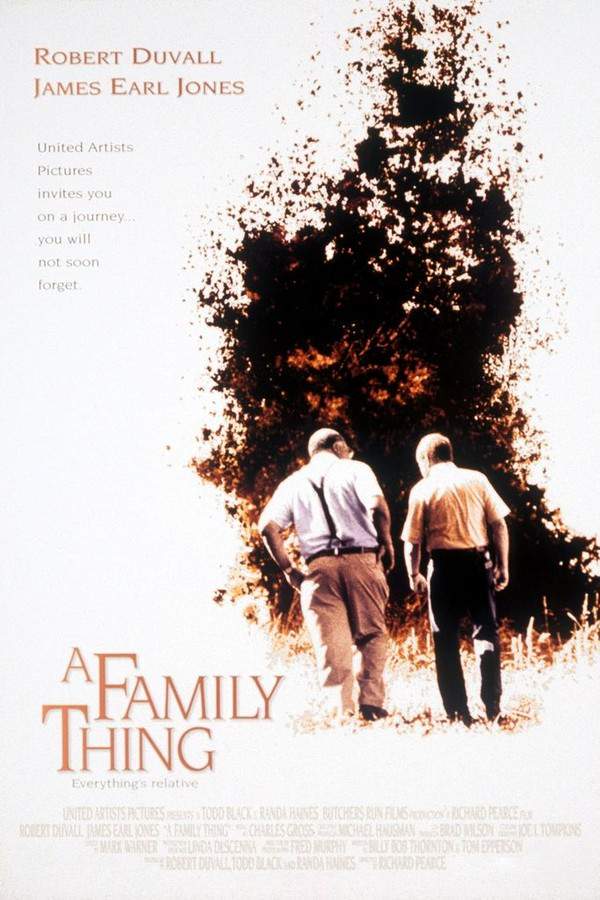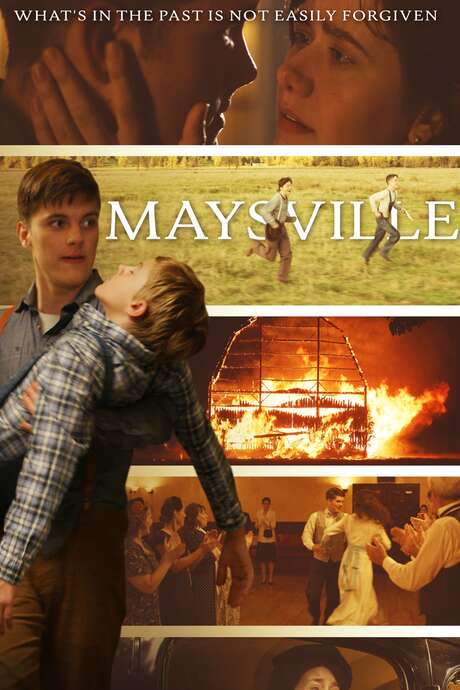
A Painted House
Year: 2003
Runtime: 97 mins
Language: English
Director: Alfonso Arau
During a harsh cotton‑harvesting season, a young boy, his family, and the migrant workers they employ fight against exhausting odds to bring in the crop. While the boy yearns for a better life, the demanding summer forces him to confront hard truths and unexpected dangers, ultimately shaping his identity.
Warning: spoilers below!
Haven’t seen A Painted House yet? This summary contains major spoilers. Bookmark the page, watch the movie, and come back for the full breakdown. If you're ready, scroll on and relive the story!
A Painted House (2003) – Full Plot Summary & Ending Explained
Read the complete plot breakdown of A Painted House (2003), including all key story events, major twists, and the ending explained in detail. Discover what really happened—and what it all means.
Luke Chandler (Logan Lerman) grows up on a cotton farm in the rural South with his grandfather, Eli “Pappy” Chandler (Scott Glenn). Together they hire migrant laborers to help with the harvest, initially bringing in the Spruills—a family of locals—along with a handful of Mexican workers who return each year. The story follows Luke’s steady, earthbound world as the rhythm of work, family, and small-town life frames a summer that will test his faith in the people he admires and the world he’s always known.
Luke’s days are full and intimate, built on simple, steady routines. He rises to a hearty breakfast of eggs, ham, biscuits, and one cup of coffee allowed by his mother, then spends long hours under the hot sun in the fields. At night, the family gathers on the porch to listen to Harry Caray announce Cardinals games on the radio, a sound that becomes a comforting constant in their modest life. Luke dreams of buying a warm-up jacket from the Sears, Roebuck catalog, saving every penny he earns in a careful, hopeful plan. The town itself hums with small pleasures and distractions: a movie house on Saturdays, church on Sundays, occasional visits to a carnival, and the glow of a live World Series broadcast on television—a startling window into a wider world beyond their sharecropping days.
In the eyes of Luke, Tally Spruill (Audrey Marie Anderson) captivates him with the bloom of first love; he even gets a glimpse of her in the creek, a moment that stays with him as the summer deepens. The Spruills are a visible presence in his world, and the line between admiration and danger soon blurs when trouble erupts around Hank Spruill (Pablo Schreiber), Tally’s brother. Hank is aggressive and volatile, and he brutalizes three boys from the Sisco family after an argument spirals out of control. Luke, like many others, is frightened but drawn into the tension of the events, as Hank attempts to dictate what the truth will be—and identifies Luke as a potential witness who might bolster his version of what happened. The adults, including the local sheriff, Stick Peters (Michael Shamus Wiles), suspect Luke is frightened into silence, but the truth has a way of emerging in quiet moments and careful conversations.
The violence that shadows the family’s life soon widens the circle of fear. After the brutal incident, a new threat arises when Cowboy (Miguel Pérez) appears, threatening Luke’s mother and revealing the stakes of telling what one has seen. In a brutal turn of fate, Cowboy murders Hank later and casts his body into the river, a chilling reminder of how quickly loyalty and survival can erase prior loyalties. Hank’s death throws the community into a tense, hushed atmosphere where fear and rumor fill the air, and Luke’s courage is tested in ways he hadn’t anticipated. The brutal events force Luke to confront uncomfortable questions about how much his elders know—and how safe he and his family really are.
Amid these shocks, Luke learns that his beloved Uncle Ricky, who’s fighting in the Korean War, may have fathered a child with a daughter of their struggling neighbors, the Latchers. The revelation widens the sense of interconnected lives in a small place where everyone seems to know someone else’s business even as they cling to the idea of privacy. Grisham’s prose lingers on the texture of daily life in the rural South, grounding the drama in ordinary moments that feel like they could be any family’s story: a late train of chores, reflections on the weather, the steady cadence of church bells and evening routines, and the simple, sometimes stubborn, persistence that keeps a family together when the world goes suddenly unglued.
Luke’s world is filled with small, vivid vignettes that give texture to the story. A morning meal that signals the day’s energy, a trip to town for gossip and a movie, and the thrill of catching a broadcast of a World Series game on television—all of these moments accumulate into a portrait of a boy content with his place yet aware that it may be slipping away. The local color—the carnival visits, the town picnic, the shared worry over crops and weather—serves as a counterpoint to the growing unease caused by the violence, the fears of betrayal, and the unpredictable actions of people who usually seem ordinary.
As the floodwaters rise and devastate the Chandler crop, the family faces a pivotal choice. They decide to leave behind generations of cotton farming and seek work in the city, with Luke’s mother choosing a future that promises opportunity, even if it means leaving the land that defined them. The image of her smiling on the bus as they head toward a new life underscores the novel’s themes of resilience and renewal, even as the house they leave behind—its weather-beaten clapboards never painted until Luke notices someone quietly covers them in white—becomes a symbol of the changes to come. Luke picks up a paintbrush and, with the help of the Mexican workers who have become part of his world, begins the quiet work of restoration and transformation, investing his own savings to bring a little brightness to a home that had always looked as if it were fading.
The title itself is a quiet meditation on status and visibility, centered on the Chandler house and its never-painted exterior. When Luke discovers that someone has secretly given the weather-worn walls a fresh coat, he takes up the task himself, continuing the job with his family’s support and the assistance of the workers who have shaped his summers. In this act of care, Luke preserves a memory of his home while also shaping a new future, one where the house’s color and the family’s livelihoods are no longer dictated solely by the land’s demands but by their own choice to paint a different life.
The story is anchored by a rich cast of characters whose lives intersect with Luke’s in ways both intimate and terrifying. Luke Chandler (Logan Lerman) navigates a world where tenderness and danger often collide, and where the people he looks up to—the steadfast Grandmother Gran Chandler (Melinda Dillon), the wise and weathered Eli “Pappy” Chandler (Scott Glenn), and the stern but caring figures around him—must confront limits they never anticipated. Hank Spruill, Tally Spruill, Mr. Spruill, Mrs. Spruill, and the others who populate this landscape move through Luke’s life with a quiet inevitability, leaving an impression that lingers long after the summer ends and the family steps into a future they will craft with their own hands.
In the end, the novel is less about destination than it is about the transformation of a place and its people—the way a house’s color can signal hope, the way work and memory bind a family, and the way a boy grows up in a world where every truth has a price to pay. It is a story of endurance, of imperfect love, and of the small, stubborn acts that keep a family whole when the ground beneath them shifts. The weathered walls of the Chandler home are rebuilt, not just in paint but in the resolve to face a future that may finally be brighter than the past.
Last Updated: October 09, 2025 at 16:52
Unlock the Full Story of A Painted House
Don't stop at just watching — explore A Painted House in full detail. From the complete plot summary and scene-by-scene timeline to character breakdowns, thematic analysis, and a deep dive into the ending — every page helps you truly understand what A Painted House is all about. Plus, discover what's next after the movie.
A Painted House Timeline
Track the full timeline of A Painted House with every major event arranged chronologically. Perfect for decoding non-linear storytelling, flashbacks, or parallel narratives with a clear scene-by-scene breakdown.

Characters, Settings & Themes in A Painted House
Discover the characters, locations, and core themes that shape A Painted House. Get insights into symbolic elements, setting significance, and deeper narrative meaning — ideal for thematic analysis and movie breakdowns.

Similar Movies to A Painted House
Discover movies like A Painted House that share similar genres, themes, and storytelling elements. Whether you’re drawn to the atmosphere, character arcs, or plot structure, these curated recommendations will help you explore more films you’ll love.
Explore More About Movie A Painted House
A Painted House (2003) Scene-by-Scene Movie Timeline
A Painted House (2003) Movie Characters, Themes & Settings
A Painted House (2003) Spoiler-Free Summary & Key Flow
Movies Like A Painted House – Similar Titles You’ll Enjoy
A Family Thing (1996) Detailed Story Recap
A House Divided (2000) Movie Recap & Themes
A Son’s Promise (1990) Full Summary & Key Details
The House of Dies Drear (1984) Full Movie Breakdown
The Painted Door (1984) Full Summary & Key Details
Maysville (2021) Movie Recap & Themes
A Home of Our Own (1993) Plot Summary & Ending Explained
The Cabin in the Cotton (1932) Movie Recap & Themes
The Paint Job (1993) Ending Explained & Film Insights
The House (1997) Detailed Story Recap
The House of the Pelican (1978) Ending Explained & Film Insights
Painted Hero (1997) Detailed Story Recap
A Boy (1977) Spoiler-Packed Plot Recap
Painted Boats (1945) Ending Explained & Film Insights
Child in the House (1956) Story Summary & Characters

















